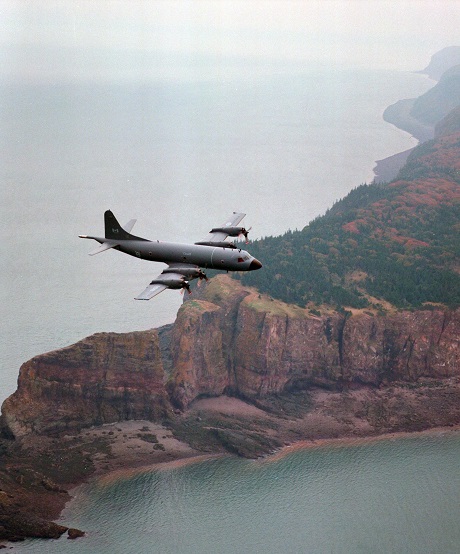The Cold War ends and the campaign against terrorism begins (1989-present) - part 8
FOCUS ON… THE CP-140 AURORA

The Governor General approved the new crest for the reborn RCAF in March 2013.
The CP-140 Aurora long range patrol aircraft was originally designed for anti-submarine warfare.
It guards the maritime approaches to Canada against military threats while monitoring non-traditional threats, such as pollution, drug smuggling and driftnet fishing, and assisting in search and rescue missions. The Aurora can fly at a maximum speed of 750 kilometres per hour and has a range of 9,622 kilometres — about a 17 hour trip!
During Operation Mobile, the aircraft demonstrated that it has grown into one of the RCAF’s most flexible, multi-function platforms, as Aurora crews carried out overland strike coordination; intelligence, surveillance, reconnaissance and control missions; and naval gunfire support.

“The three elements of the Canadian Forces will have their historic names restored: Maritime Command will now be known as the Royal Canadian Navy, Land Force Command will be the Canadian Army and Air Command will be the Royal Canadian Air Force.”
With these words from Defence Minister Peter MacKay on August 16, 2011, the Royal Canadian Air Force returned to its historic name, which was first granted on April 1, 1924 — the date the Air Force celebrates as its anniversary.
“In 1968 the government of the day passed a Canadian Forces Reorganization Act which unified the Royal Canadian Navy, the Canadian Army and the [Royal] Canadian Air Force into a single service, the Canadian Forces,” said Minister MacKay. “An important element of Canadian military heritage was lost when these three former services were required to relinquish their historic titles.”
The return to the historical names for the three services did not change the organization of Canada’s military or the unification of the Canadian Armed Forces, which continues to be a single, unified tri-service force.
Although at the time, much was made of the return of the “Royal” title, the milestone was about much more than that. With unification, the Navy had become Maritime Command and the Army had become Mobile (later Land Force) Command; Air Command was established in 1975.
Therefore, the restoration of the names meant that, for the first time since 1968, Canada again officially had a Navy, an Army and an Air Force.
Report a problem or mistake on this page
- Date modified: